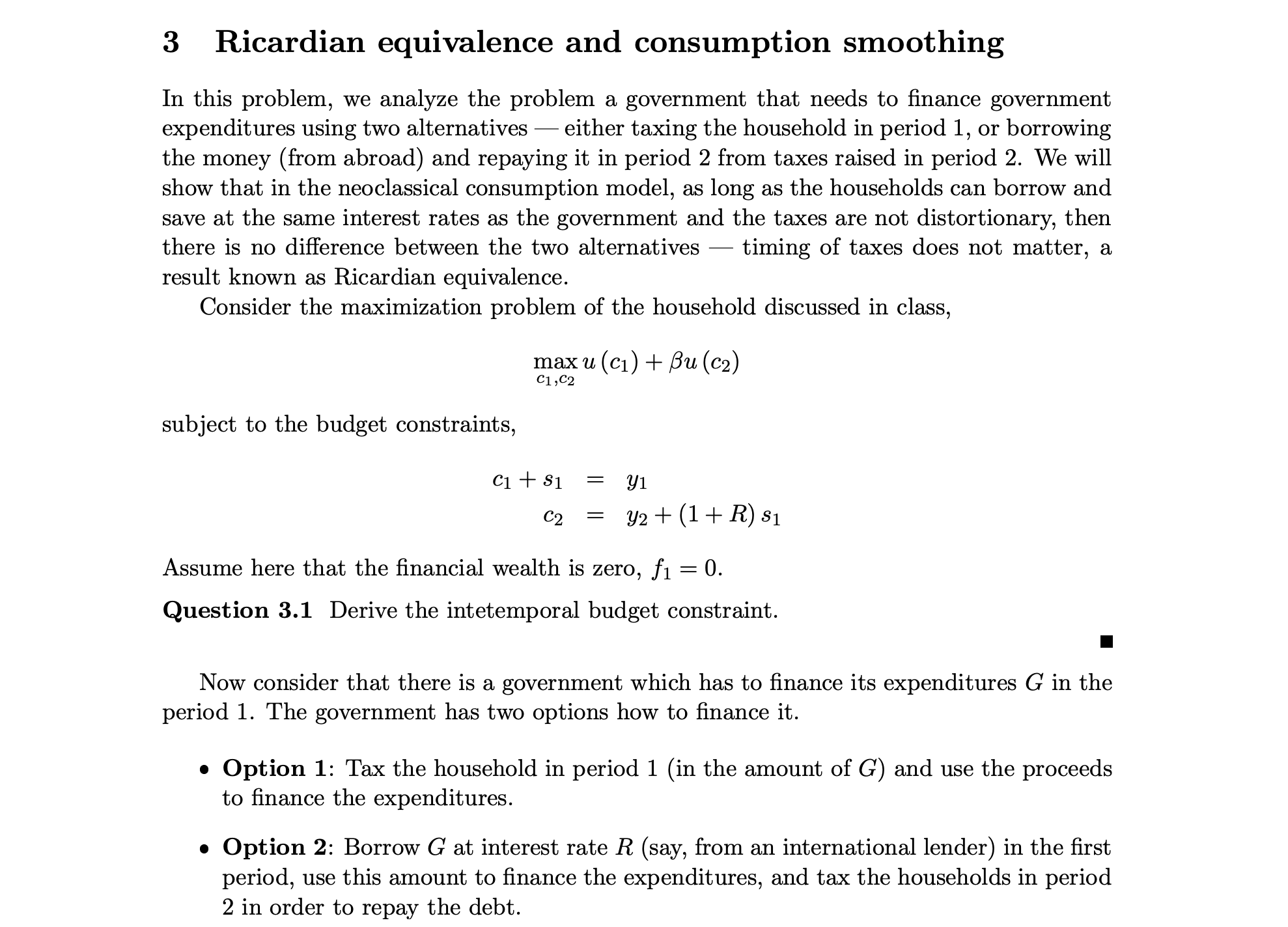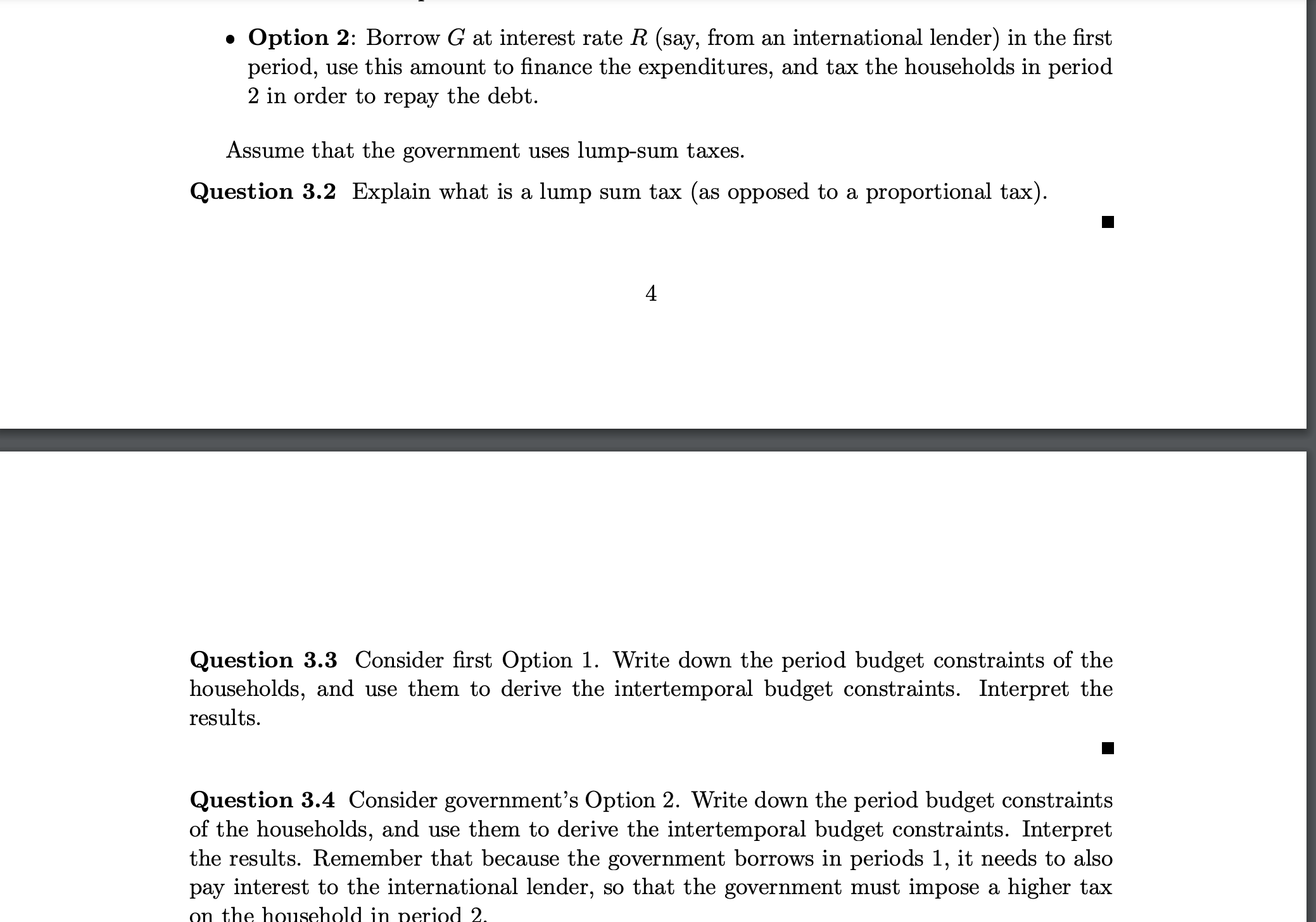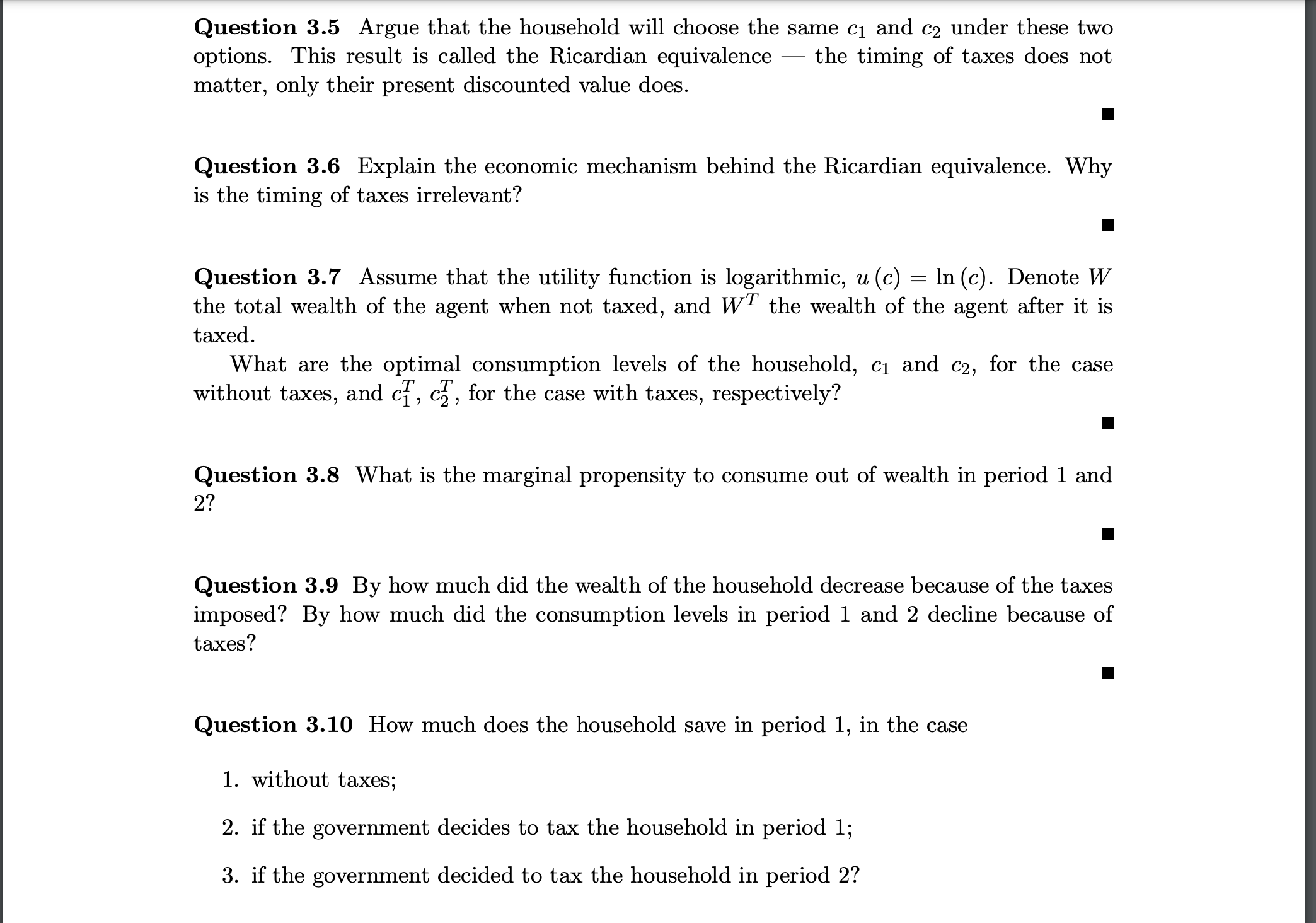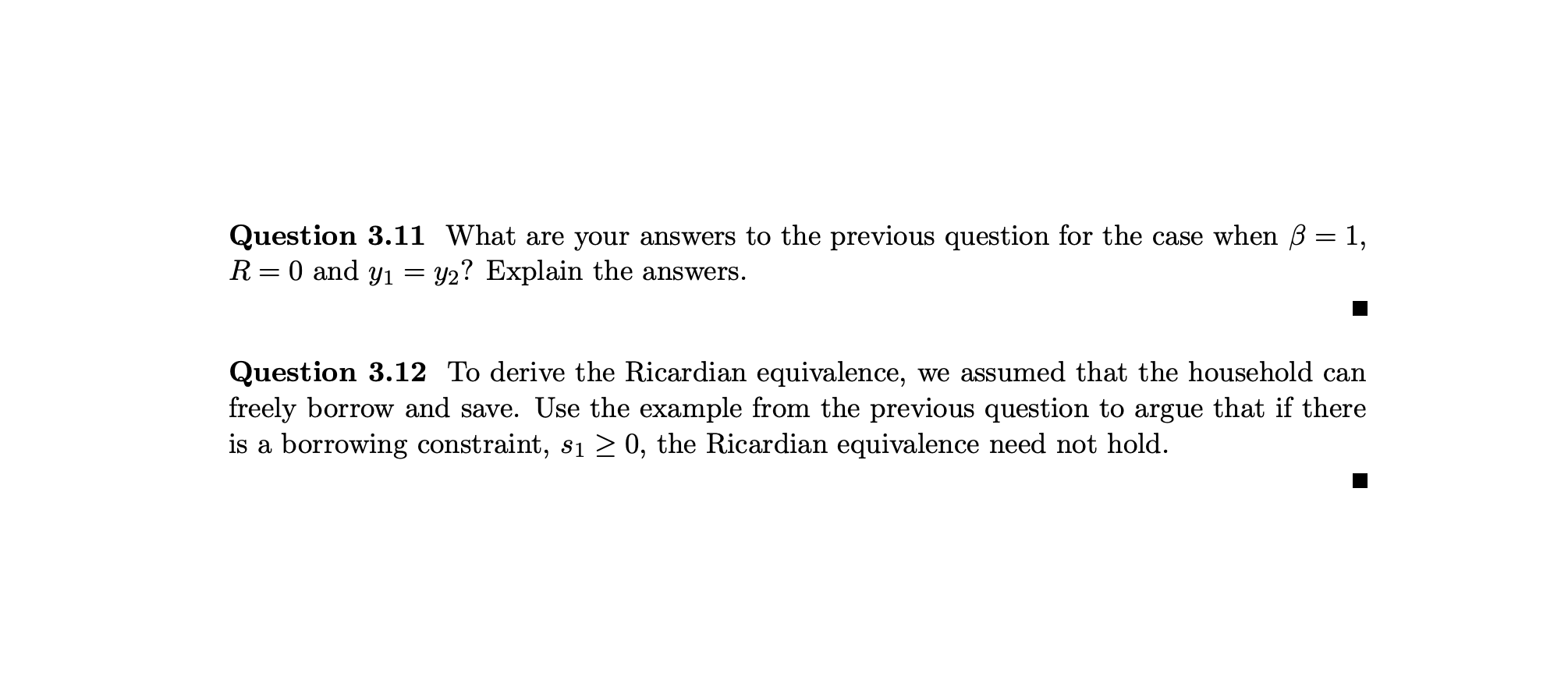



question on the pic
3 Ricardian equivalence and consumption smoothing In this problem, we analyze the problem a government that needs to finance government expenditures using two alternatives - either taxing the household in period 1, or borrowing the money (from abroad) and repaying it in period 2 from taxes raised in period 2. We will show that in the neoclassical consumption model, as long as the households can borrow and save at the same interest rates as the government and the taxes are not distortionary, then there is no difference between the two alternatives - timing of taxes does not matter, a result known as Ricardian equivalence. Consider the maximization problem of the household discussed in class, max u (c1) + Bu (c2) C1 , C2 subject to the budget constraints, c1 + $1 = y1 C2 y2 + (1 + R) $1 Assume here that the financial wealth is zero, f1 = 0. Question 3.1 Derive the intetemporal budget constraint. Now consider that there is a government which has to finance its expenditures G in the period 1. The government has two options how to finance it. . Option 1: Tax the household in period 1 (in the amount of G) and use the proceeds to finance the expenditures. . Option 2: Borrow G at interest rate R (say, from an international lender) in the first period, use this amount to finance the expenditures, and tax the households in period 2 in order to repay the debt.0 Option 2: Borrow G at interest rate R (say, from an international lender) in the rst period, use this amount to nance the expenditures, and tax the households in period 2 in order to repay the debt. Assume that the government uses lumpsum taxes. Question 3.2 Explain What is a lump sum tax (as opposed to a proportional tax). Question 3.3 Consider rst Option 1. Write down the period budget constraints of the households, and use them to derive the intertemporal budget constraints. Interpret the results. Question 3.4 Consider government's Option 2. Write down the period budget constraints of the households, and use them to derive the intertemporal budget constraints. Interpret the results. Remember that because the government borrows in periods 1, it needs to also pay interest to the international lender, so that the government must impose a higher tax on the household in neriod 2, Question 3.5 Argue that the household will choose the same cl and (:2 under these two options. This result is called the Ricardian equivalence the timing of taxes does not matter, only their present discounted value does. I Question 3.6 Explain the economic mechanism behind the Ricardian equivalence. Why is the timing of taxes irrelevant? I Question 3.7 Assume that the utility function is logarithmic, u (c) = 1n ((2). Denote W the total wealth of the agent when not taxed, and WT the wealth of the agent after it is taxed. What are the optimal consumption levels of the household, 01 and 02, for the case without taxes, and cf, 0?, for the case with taxes, respectively? I Question 3.8 What is the marginal propensity to consume out of wealth in period 1 and 2? I Question 3.9 By how much did the wealth of the household decrease because of the taxes imposed? By how much did the consumption levels in period 1 and 2 decline because of taxes? I Question 3.10 How much does the household save in period 1, in the case 1. without taxes; 2. if the government decides to tax the household in period 1; 3. if the government decided to tax the household in period 2? Question 3.11 What are your answers to the previous question for the case when = 1, R = 0 and y1 = y2? Explain the answers. I Question 3.12 To derive the Ricardian equivalence, we assumed that the household can freely borrow and save. Use the example from the previous question to argue that if there is a borrowing constraint, 31 2 0, the Ricardian equivalence need not hold














